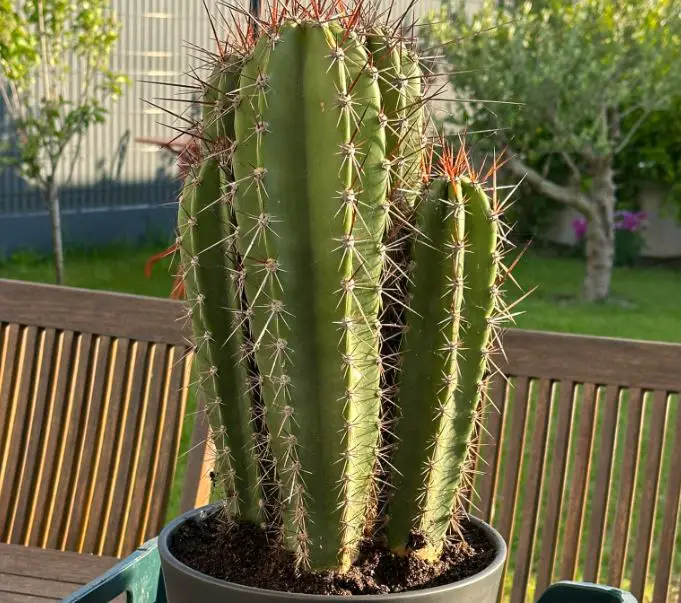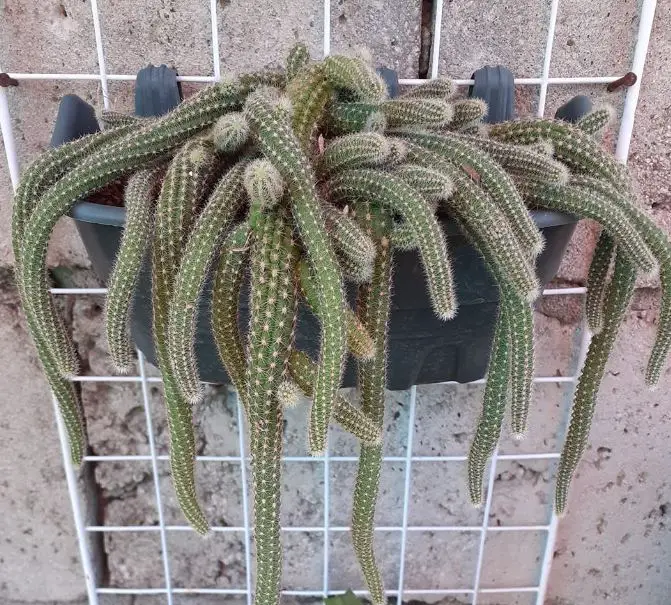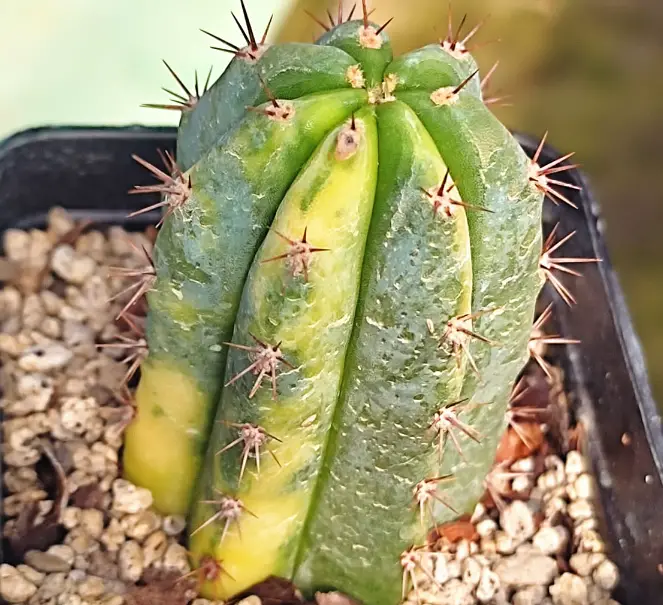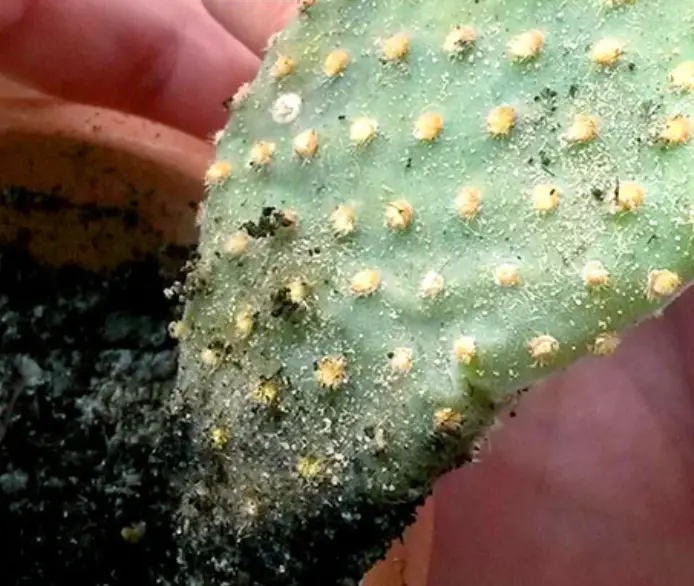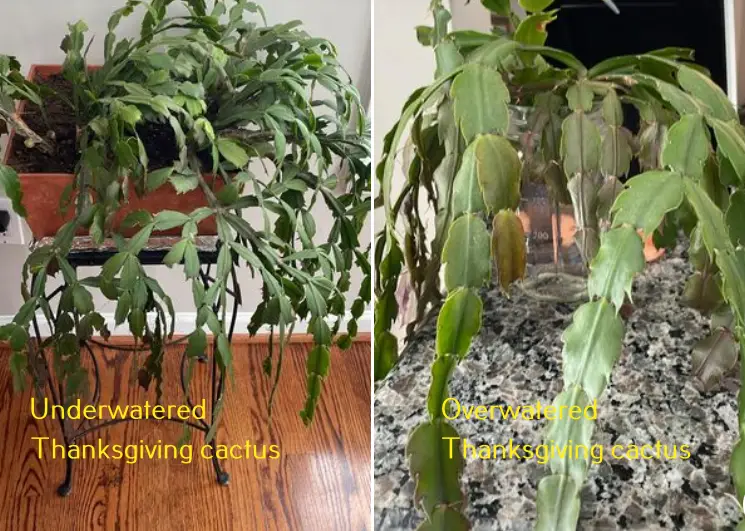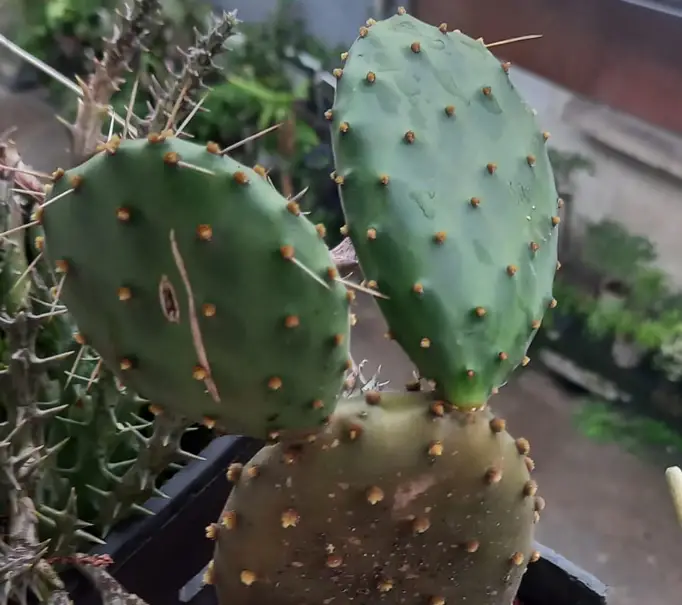Why is My Cactus Turning White? 6 Reasons & How to Save the Plant
Cacti are incredibly beautiful plants when healthy. But sometimes, they can discolor when under distress. Cactus turning white is a common problem that results from several conditions, including pest infestations, inadequate lighting, sunburn, frost burn, root rot, and over-fertilizing.
Fortunately, these problems are usually easy to fix, but you must act quickly before your plant is in critical danger. Here is an explanation of why a cactus may turn white and what to do to save the plant as fast as possible.
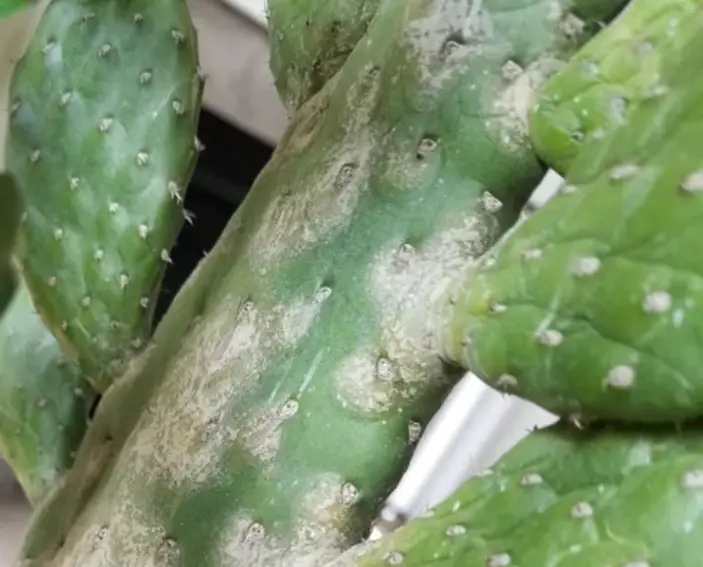
Why is my cactus turning white?
Based on observation, the following are potential reasons why your cactus is turning white and possible fixes.
1. Pest infestation
Pests aren’t such a problem on cactus plants, but when present, they tend to hide in tight spots where locating them can be difficult. A white coating on a cactus can be a sign of scale insects. Mealybugs, in particular, secrete a white cottony fuzz in which their eggs and larvae are covered.
When feeding on sap, pests usually damage cactus plants resulting in brown or white spots on stems or leaves. Pathogens might also find their way into the plant through the openings created by these pests. In time, the affected plant may discolor, shrivel, rot, and die.
How to fix
If you suspect pests, the first step is to isolate the infested plant. Next, wash them off with a strong strand of water from a hose as you target hidden areas.
Dap any visible pests with isopropyl alcohol on a piece of cloth. You may also use insecticidal soap or agricultural oils like neem but be sure to use as the manufacturer directs.
Keeping your plants clean and tidy can help prevent the problem of pests. New plants should be fully inspected before introducing them to your home collection. Regular inspection should also continue, and any bug you see must be removed immediately.
2. Severe sunburn
Cactus are known to thrive in intense sunlight. However, plants from a greenhouse or shade might not do well in long hours of direct sunlight. The tender stems might discolor as a result of sunburn, and in time you’ll start seeing your cactus turning yellow or white.
Traditionally, cacti store water in their succulent stems, and they can go for many weeks without getting thirsty. In intense sunlight, your cactus may also lose excessive moisture resulting in wrinkled or shriveled stems.
The dehydration combined with scorching may permanently damage your plant.
How to fix
Unfortunately, cactus sunburn doesn’t have an immediate fix. The problem might resolve on its own when you take your cactus to a shade or a place with indirect sunlight.
Always acclimatize your plants from shady areas when introducing them to sunlight. Start by providing filtered sunlight and then a few hours of direct sunlight.
3. Frost damage
Succulents aren’t good at handling frost or subzero temperatures. A cactus will likely turn white when temperatures drop below 20 degrees Fahrenheit. In extreme cases, the softened tissues may turn black, rot and eventually fall off.
Fortunately, the roots are usually unaffected, and there are chances of resurrecting the plant once the cold season ends.
How to fix
Most plants that turn white will recover on their own when the temperature warms up. However, cacti that have turned black or decayed may be saved by removing the rotten parts. This should be done after the frost has ended. It will take a few weeks for new stems to form.
When buying a cactus, always consider its hardiness zone. Otherwise, bring your cactus indoors when the temperatures dip in the fall. To counter the freezing temperatures outside, you can protect your cactus using frost clothes or raw covers.
4. Root rot
Cactus root rot is a serious condition commonly caused by overwatering or poorly draining soil. The cactus turning white can be a sign of root rot. Excess water in the soil usually prevents cactus roots from obtaining oxygen, which makes them suffocate and die.
Soil-dwelling fungi that cause root rot also thrive in soggy soil conditions.
Without adequate moisture in the soil, cactus roots may also die due to dehydration resulting in the same problem as when overwatered. Fortunately, the underwatered cactus can easily be revived by simply watering it again.
How to fix
Root rot is difficult to treat, especially when caused by overwatering. Cutting off the damaged roots and repotting the cactus in fresh soil may save the plant. Use well-draining soil made for succulents and a pot with a drainage hole.
Water your cactus only when the soil feels dry to the touch and don’t let the plant sit in any standing water.
5. Over-fertilizing
Desert cacti have minimal need for supplemental nutrients. Using fertilizer on your cactus more than required can harm it. A cactus turning white may signify excess salt buildup in the soil. Fertilizing may also stimulate more foliage resulting in cactus leaning on one side due to lack of stability.
How to fix
Cactus must be fertilized only once or twice per year during active growth. If you suspect that you have overfed your cactus, the only solution is to repot it in fresh soil. Then cut back on fertilizing for a while until when your plant has recovered.
6. Powdery mildew
Powdery mildew is a type of fungus that may show up as a white coating or white spots on cactus. It is not common in cacti plants unless placed in a poorly ventilated, humid area. This white fungus on cacti may spread and deform the leaves when uncontrolled.
How to fix
The first step in treating powdery mildew on cactus is to isolate the affected plant to prevent the fungus from spreading to other healthy plants. Then spray the affected parts with rubbing alcohol. Finally, keep the cactus in a well-ventilated lit area away from moisture sources.
Final Thought
A cactus turning white signifies a problem that needs your attention. Be sure to look into its growth condition, including watering, lighting, ventilation, temperature, and feeding. However, speed and precision will make it easy to save the affected plant.
References:
“Powdery Mildew of Grapes in Home Gardens,” PennState Extension
“INDOOR CACTI,” Clemson Cooperative Extension
Farr, D. F., Bills, G. F., Chamuris, G. P., and Rossman, A. Y. 1989. Fungi on plants and plant products in the United States. St. Paul: APS Press. 1252 pp.
My name is Diane M Lewik, and I am the founder of this website. I am a degree holder in plant biology from the University of California – Berkeley. Over years, I have cultivated a vast collection of succulents and I have learned a great deal about how to grow and care for these unique plants.
